A small stain can signal a big problem. Catching a roof leak early protects your ceilings and framing while helping you avoid costly remediation later. Below is a clear, homeowner-friendly guide to spotting leak clues inside, outside, and in the attic, along with what to do next and how a professional inspection works.
What to Look For Inside Your Home
Water Stains on Ceilings or Walls
One of the most common early signs of a roof leak is a water stain on the ceiling or upper walls. These stains often appear as yellow, brown, or rust-colored rings that grow after every rainfall. The discoloration forms when moisture seeps through the drywall or plaster and evaporates, leaving behind mineral deposits. Even if the stain seems small, it usually means water damage has been entering your home for some time and that the leak may be more extensive above the visible damage.
Peeling or Bubbling Paint
When moisture becomes trapped behind drywall or paint, it pushes outward, causing paint to peel, bubble, or blister. This is a clear sign that water has infiltrated the wall cavity or ceiling material. In many cases, you’ll find this issue around window frames, near vents, or in rooms below the roofline. Ignoring this can lead to weakened drywall and larger areas of damage as the paint continues to separate from the surface.
Musty or Damp Odors
Often, that moisture comes from attic water collecting after a leak, which creates the damp smell many homeowners notice before seeing visible damage. These odors often come from wet wood or drywall that hasn’t had a chance to dry completely. Over time, this dampness can lead to mold growth or decay, both of which are expensive to fix. If your home smells musty even on dry days, it’s a good idea to check your attic or upper walls for lingering moisture.
Sagging Drywall or Soft Spots
If a section of your ceiling or wall begins to sag, feel spongy, or bow downward, it’s a sign that water has pooled above the surface. Prolonged exposure to moisture weakens the gypsum in drywall and can cause it to lose structural integrity. Sagging areas often appear after heavy rain or snowmelt, indicating that a leak is ongoing and requires immediate attention to prevent collapse or further damage.
Visible Mold or Mildew
Dark or fuzzy spots on your ceiling, walls, or near vents are a clear indication of moisture problems. Mold and mildew thrive in damp environments, and roof leaks provide the perfect conditions for them to grow. While some mold may stay surface-level, other types can spread, posing health risks to your family and damaging your home’s air quality. Addressing the moisture source quickly is the only way to stop mold from returning.
Identifying Leaks From The Outside
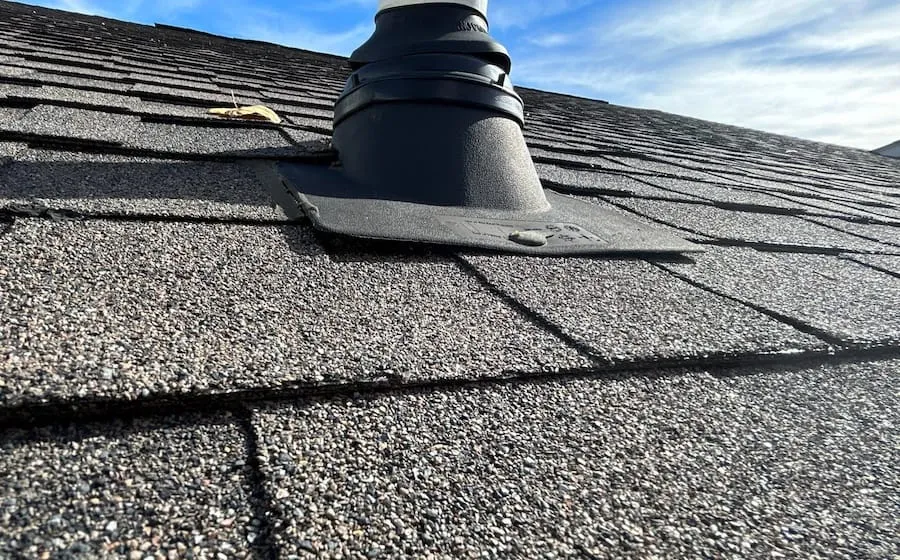
Damaged or Loose Flashing
Flashing seals the joints and edges of your roof, especially around chimneys, skylights, walls, and vents. When it becomes cracked, loose, or separated, water can easily find its way inside. Damaged flashing is one of the most common sources of roof leaks because it is often hidden until moisture reaches the attic or ceiling.
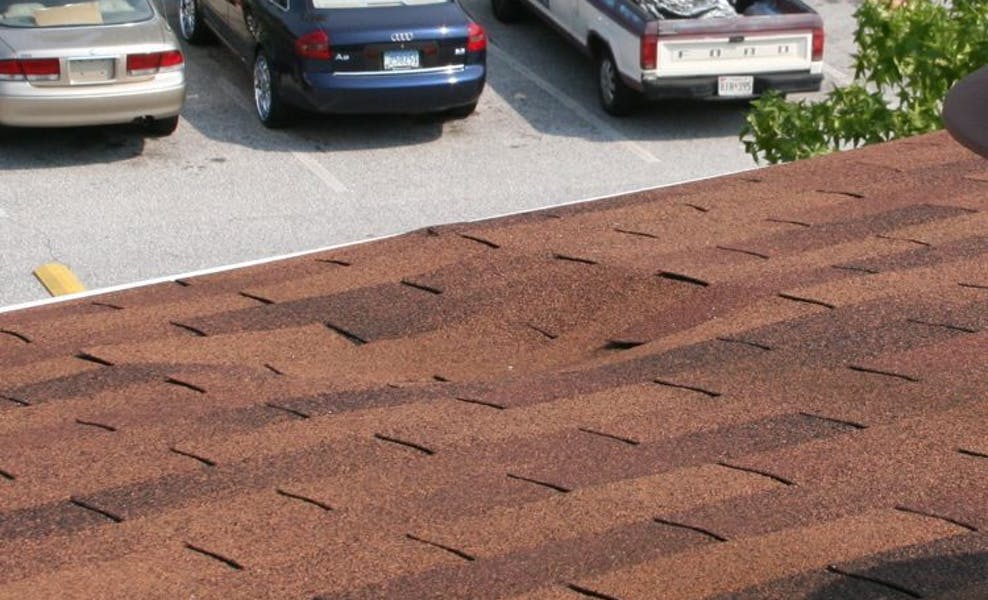
Sagging Areas or Soft Decking
A roof that sags or feels soft when walked on usually means moisture has gotten trapped beneath the surface. This water weakens the decking and can lead to wood rot, mold, or structural damage if ignored. While sagging may seem minor at first, it is a clear warning that your roof needs immediate attention.
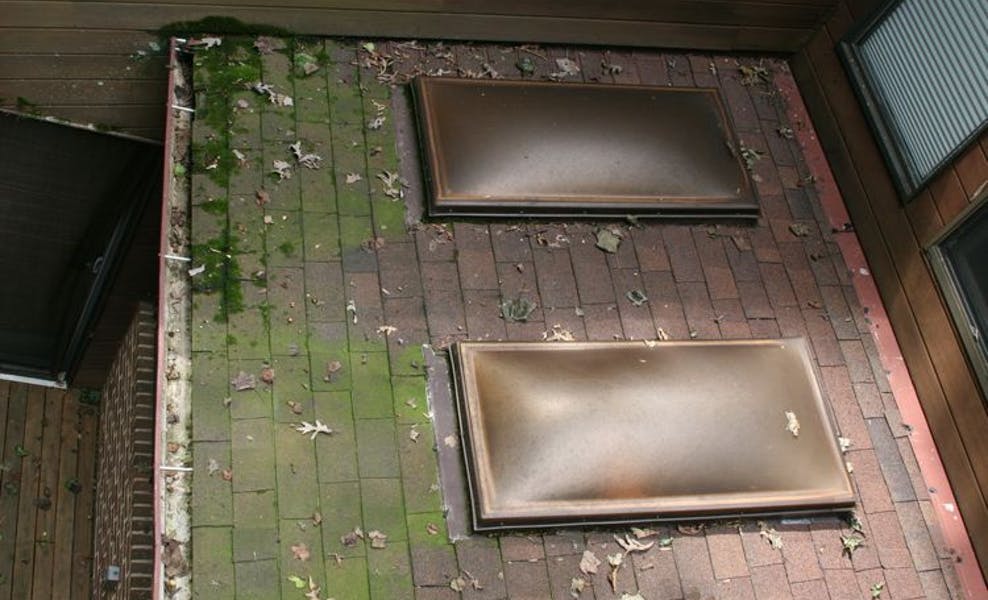
Moss or Algae Growth
You’ve probably heard that algae is bad for your roof, but the real concern is moss. Algae, which shows up as dark streaks, mostly affects your roof’s appearance and makes it look older than it is. Moss, on the other hand, is much more damaging. It grows thick, traps moisture, and digs into the shingle surface, loosening the protective granules that shield your roof from UV rays and weather. Over time, this causes shingles to wear out faster. While algae can be cleaned for cosmetic reasons, moss should always be removed and treated to prevent premature roof aging.
Damage Based on Different Types of Roofs
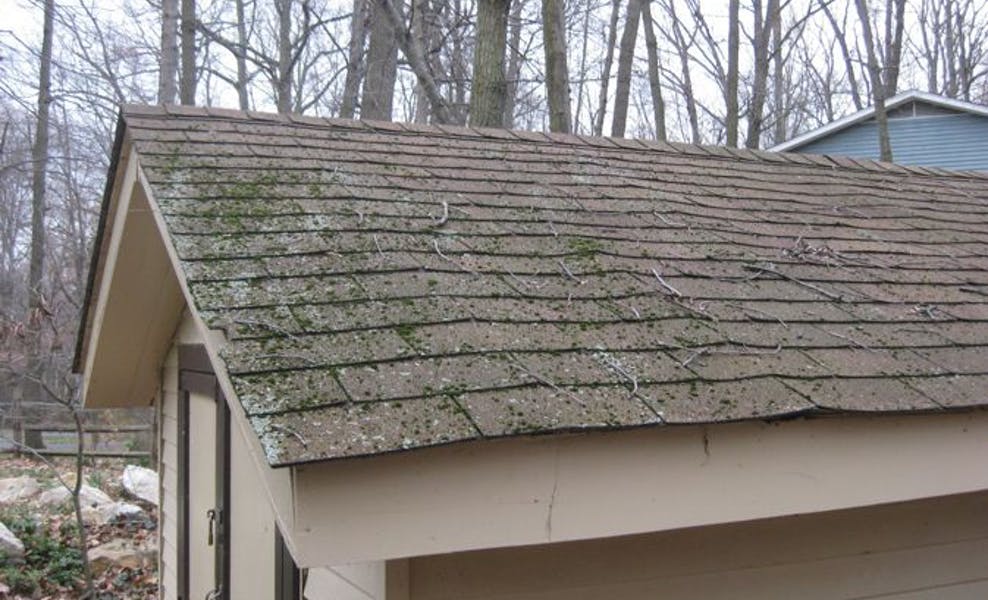
Shingle Roofs
When shingles crack, curl, or blow off, they expose the materials underneath, allowing water to seep in and spread. This moisture can travel far from the original entry point before showing visible signs inside your home. Additionally, if you find loose shingle granules in your gutters or at the end of your downspouts, it means your roof is showing signs of age. Asphalt shingles rely on these granules to protect them from sunlight and weather damage. When they start to wash away, the shingles become brittle and lose their ability to keep water out.

Metal Roofs
Look for loose or missing fasteners, gaps where panels overlap, or rust forming around seams and screws. Water often finds its way in through failed sealant or flashing near vents and skylights. Expansion and contraction from temperature changes can also loosen fasteners and create small openings that let water in.

Flat Roofs
Flat roofs are especially prone to leaks because water tends to pool instead of running off. Check for standing water, cracks in the membrane, or lifted seams where materials meet. Blisters or soft spots in the roofing surface can signal trapped moisture underneath. Also, inspect around roof penetrations like HVAC units or drains, since these are common entry points for leaks.
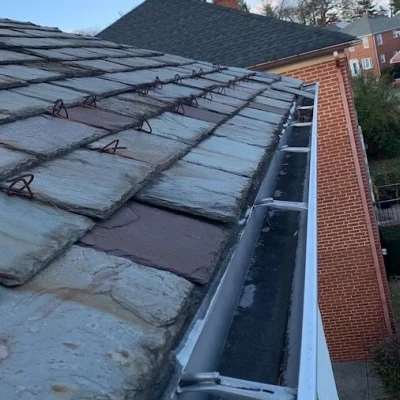
Slate Roofs
Leaks usually develop when individual slates crack, slip, or go missing. Damaged flashing around chimneys or valleys is another common culprit. Because slate is heavy and fragile, it’s best to avoid walking on it and instead inspect it from the ground or with binoculars. Spotting missing pieces, uneven surfaces, or metal corrosion early helps protect both the roof’s structure and its long-term appearance.
Signs of a Leak in the Attic
Your attic is one of the best places to spot early signs of a roof problem. While ceiling stains appear after the damage is done, the attic can reveal hidden moisture, airflow issues, or weak points in your roofing system long before that happens. We recommend checking inside the attic at least once a year during a heavy rain. Below are the main things to look for during this inspection.
Damp Insulation or Water Marks on Rafters
Wet insulation or dark marks along the rafters usually mean water is sneaking in from above. Over time, this moisture can compress insulation and reduce energy efficiency. If you see discoloration or feel damp spots, it’s important to locate and repair the source quickly to prevent further damage.
Drips During or Right After Rain
Hearing or seeing drips inside your attic right after a storm is a clear warning sign. Even a small trickle indicates an active leak that can spread across beams and decking. Catching these drips early allows for quicker, less expensive repairs before the leak reaches your living space.
Rusty Nail Tips or Streaked Wood
Rust on nail heads or streaks running down the wood is a common sign of excess moisture or condensation inside the attic. While it may not always point to external roof leaks, it does mean humid air is trapped where it shouldn’t be.
Daylight Peeking Through Decking
If you can see daylight shining through cracks or nail holes in the roof decking, water can likely get in at those locations. These openings may look small, but they allow moisture, pests, and drafts to enter. Sealing gaps and replacing damaged sections of decking can help restore the roof’s integrity and prevent leaks.
Warm, Humid Air from Poor Ventilation
When warm, humid air gets trapped in the attic, it can create condensation that looks like a roof leak. This often happens when soffit or ridge vents are blocked or undersized. Improving ventilation keeps air circulating, prevents moisture buildup, and protects the underside of your roof from mold and rot. Keep in mind, attic moisture is not always a roof-cover issue. AC condensate backups can create leak-like symptoms.
What to Do If You Find Problems With Your Roof
Even small roof leaks can turn into a costly problem if they’re ignored. Taking quick, smart action can help minimize damage and make it easier for your roofer to find the true source. Here’s what to do next:
Document what you see.
Start by taking clear photos of any visible signs of a leak. Capture ceiling stains, bubbling paint, or active drips. These images can help your roofer understand the extent of the issue and can also support insurance claims later if needed.
Check the attic after rainfall (if safe).
Once it’s safe, grab a flashlight and carefully inspect your attic. Look for wet insulation, damp wood, or water stains along the roof decking and rafters. You might also notice rusty nail tips or humid air—both signs of hidden moisture.
Protect the interior.
Move furniture and valuables away from the affected area. Place containers under drips and cover items with plastic sheeting to prevent further damage. This buys you time and keeps the problem from spreading until repairs are made.
Avoid guesswork patches.
Don’t be tempted to slap on a quick caulk or roof cement patch. Water can travel several feet from its entry point before showing inside, so a surface patch often hides the problem instead of fixing it. Trying to repair the wrong spot can even make leaks worse.
Schedule a professional inspection
A roofing professional can track the leak back to its source using moisture meters, attic inspections, and roof-level evaluation, then recommend the right roof repairs and roofing materials to stop the issue for good. Ask for photos of the issue, a clear diagnosis, and a written repair plan. If your roof problems are older or the damage looks extensive, request an estimate for both repair and replacement options.

Professional Roof Leak Inspections in Maryland
RoofPRO is a full-service roofing company that helps Maryland homeowners keep their roofs strong and watertight. Our team knows how frustrating leaks can be, and we take the time to find the real problem instead of covering it up. From damaged shingles, cracked flashing, and gutter leaks to hidden attic moisture, we inspect every part of your roof to make sure the repair lasts.
Since 2004, homeowners across Maryland have trusted us for honest work, quality materials, and reliable results. We’re certified by top manufacturers like CertainTeed and backed by hundreds of great reviews from local customers. If you suspect a leaking roof or just want peace of mind before the next storm, schedule your inspection today and see why Maryland homeowners count on RoofPRO.
Q&A: Causes, Risks, and Prevention
The most common culprits behind leaks are aging materials, damaged or loose flashing around chimneys, walls, skylights, and vents, and poor workmanship. Every roofing product comes with manufacturer installation guidelines, and following them is crucial for long-term performance. Unfortunately, some roofers skip steps or cut corners due to inexperience or haste. That’s why it’s important to hire a roofing contractor who’s certified by the manufacturer to ensure your roof is installed correctly and built to last.
Delays allow water to spread invisibly through insulation and wood. That leads to rotted decking and framing, sagging ceilings, and even electrical hazards. Insurers may also limit coverage if damage shows signs of neglect.
- Schedule a roof and attic check at least once a year and after major storms.
- Keep gutters and downspouts clear so water drains properly.
- Watch high-risk areas: flashing, skylights, chimneys, and vents.
- Maintain good attic ventilation to reduce moisture buildup.
- Replace aging shingles and reseal vulnerable details before they fail.
Article Updated November 1, 2025.

Author Bio
Tim Taylor – Owner & Founder of RoofPRO
Tim Taylor began his roofing career in 2003 and founded RoofPRO in 2004 with a mission to fix the poor workmanship that often causes roof leaks. With over 20 years of hands-on experience, he’s earned elite credentials like CertainTeed’s ShingleMaster Wizard certification, HAAG inspection certifications, and OSHA safety training. His expertise in leak repair, flashing repair, and post-storm restoration has made RoofPRO one of Maryland’s most trusted roofing companies. Tim continues to lead with the same principle that built his reputation—roof it right the first time.



